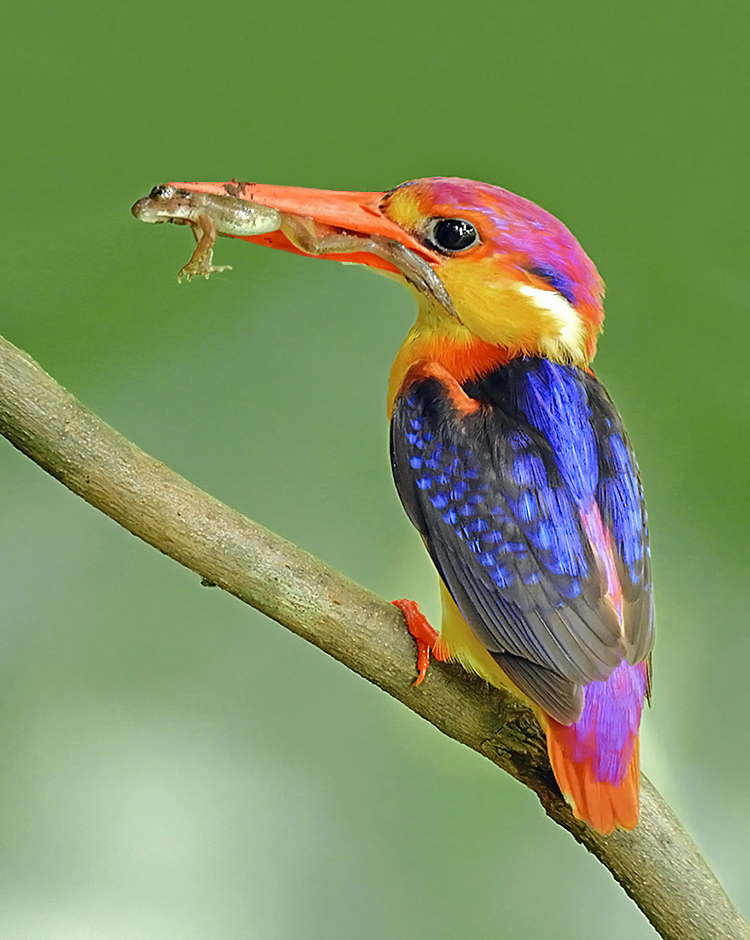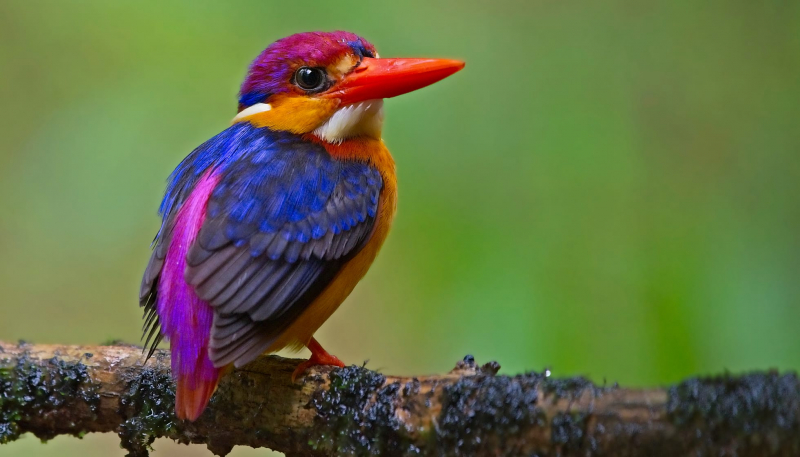Oriental Dwarf Kingfisher

The Oriental Dwarf Kingfisher (Ceyx erithaca), also known as the black-backed kingfisher or three-toed kingfisher, is a pocket-sized bird in the family Alcedinidae. The Oriental dwarf kingfisher is a forest and wetland-dwelling species that is endemic across much of the Indian subcontinent and Southeast Asia.
One of the tiniest kingfisher species is the oriental dwarf kingfisher. Its length is 12.5–14 cm, making it only slightly larger than a medium-sized hummingbird (including bill and tail). Sexual dimorphism does not exist, and the two sexes are otherwise comparable. A black spot on the forehead, blue and white patches on the side of the neck, a lilac-rufous crown, rump, and tail, a dark blue back and wings, a white chin and throat, pale yellow-orange underparts, a dark brown iris, and red legs, feet, and a beak are shared by both sexes. In addition to having a white chin, throat, and belly, a yellow-orange bill with a pale tip, blue scapulars, and blue wing coverts, juveniles are duller and have less lilac coloring. This kingfisher species has three toes, which is why it is frequently referred to as the three-toed kingfisher; other kingfishers, however, also have three toes. The toe count in these kingfisher species does not appear to be adaptive.











